Learn how to make the perfect loaf of Italian bread, just like you'd buy at a bakery or store. This easy recipe makes two large loaves of bread with a soft, airy crumb and a crunchy, chewy crust.
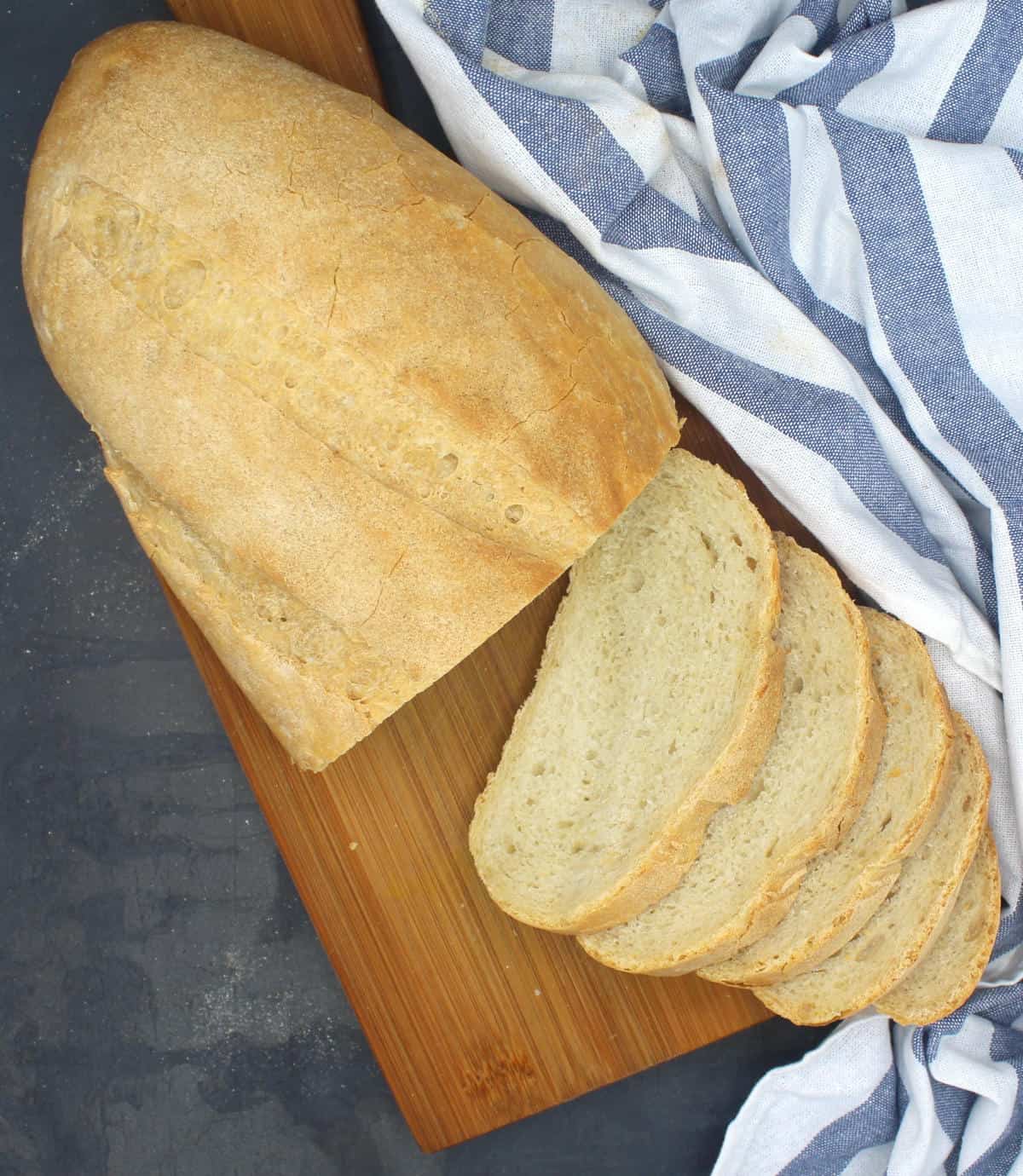
There are many types of Italian bread, from a focaccia to a ciabatta to this Tuscan bread, and more. The Italian bread I have for you today is what you'd likely find sold at the supermarket simply as "Italian bread." It's very different from those other breads I mentioned, but it's just as delicious.
This is an exquisite bread: with a spongy, soft, airy crumb and a slightly hard, chewy crust. It is wonderful to dunk into soups, stews, make a bruschetta with, or to simply slather with vegan butter and pop into your mouth. The recipe makes two loaves, and leftovers make the best toast. This is also a great bread to throw on the grill!
[feast_advanced_jump_to]Why you will love this Italian bread recipe
- Delicious bread. I love crusty breads with soft crumbs and this homemade Italian bread does not disappoint. It's also full of flavor from the biga, an overnight starter used in Italian breadmaking. And it's tweakable to your preferences: if you like a softer crust, I've got you covered!
- Simple recipe. This bread needs three rises, including an overnight rise, so this is one of those recipes you want to plan ahead for. But the process adds up to just minutes of hands-on time. You also need just a few simple ingredients: yeast, flour, salt and water.
- Versatile. You can serve up this bread with almost any main dish, or use it to make yummy appetizers. It also toasts up beautifully.
- Makes two loaves. Which is perfect because I have enough bread to last us the whole week. You can freshen it up before you serve it by placing it in a brown paper bag, spraying the bag with some water, and placing in a hot oven for about 5-10 minutes. It will be like new.
- Vegan, soy-free and nut-free recipe
What is a biga?
A biga is a starter or pre-ferment used in many Italian bread recipes. It is created by mixing together yeast, flour and water that is then allowed to ferment several hours or overnight before being mixed with more flour and other ingredients to create a dough. The biga, which you could think of as a shortcut sourdough starter, adds tons of flavor to the bread, and it also helps leaven the bread (although not enough to skip the yeast altogether).
Ingredients
- Unbleached all purpose flour. This is the best flour for this bread and gives a delicious, airy crumb.
- Active dry yeast or instant yeast. You can use either.
- Extra virgin olive oil. For coating the bowl.
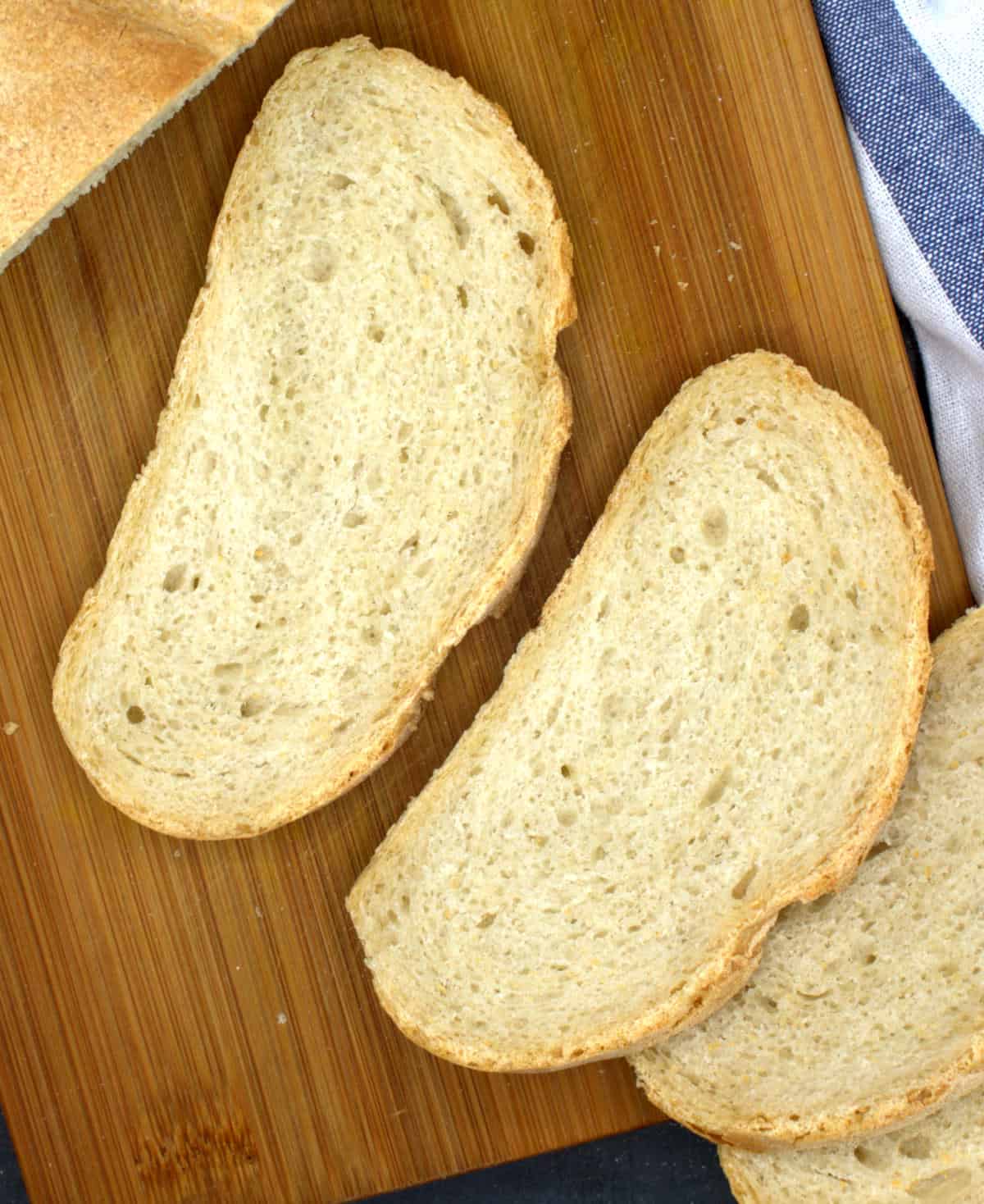
How to make Italian bread
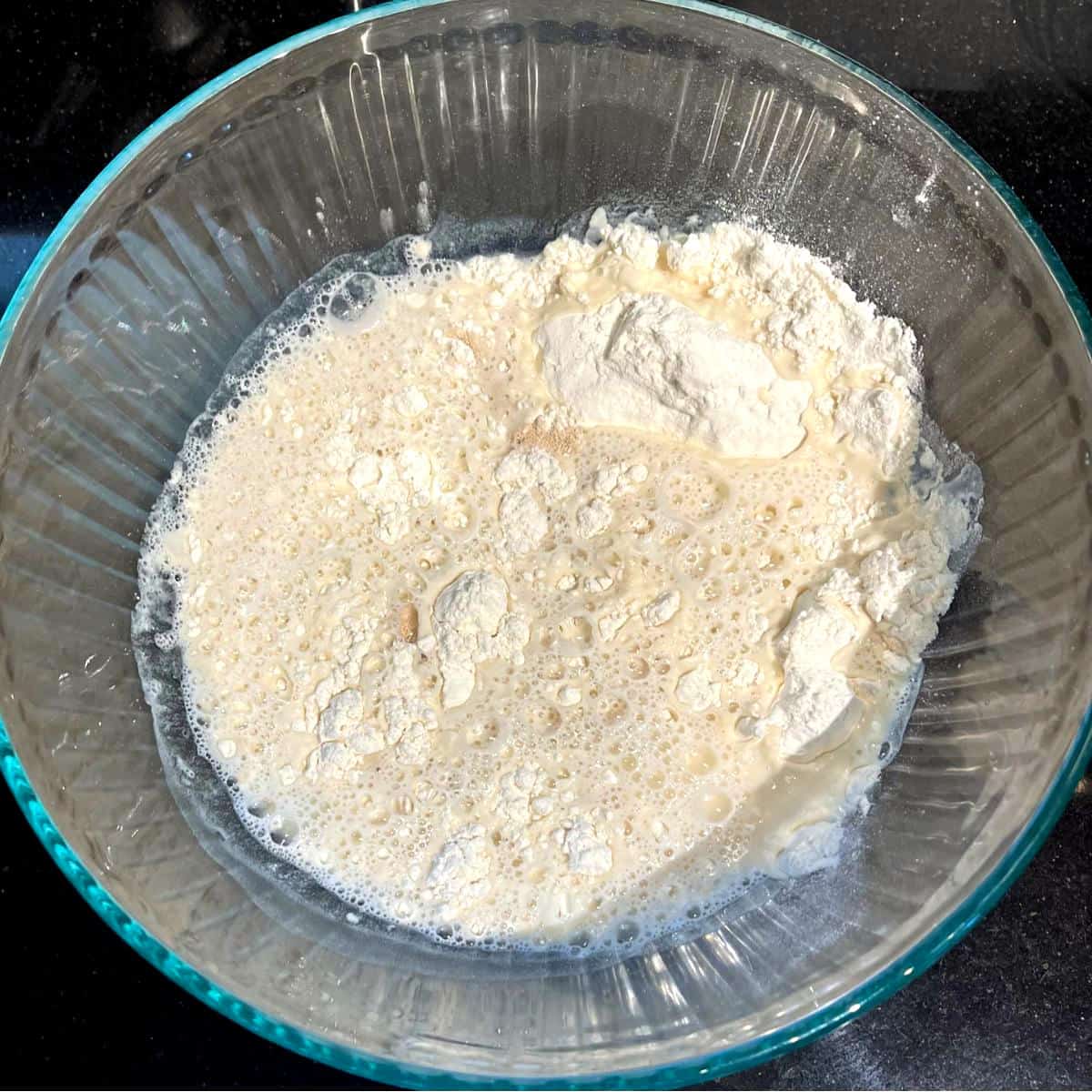
Place the biga starter ingredients in a bowl: flour, yeast and warm water.
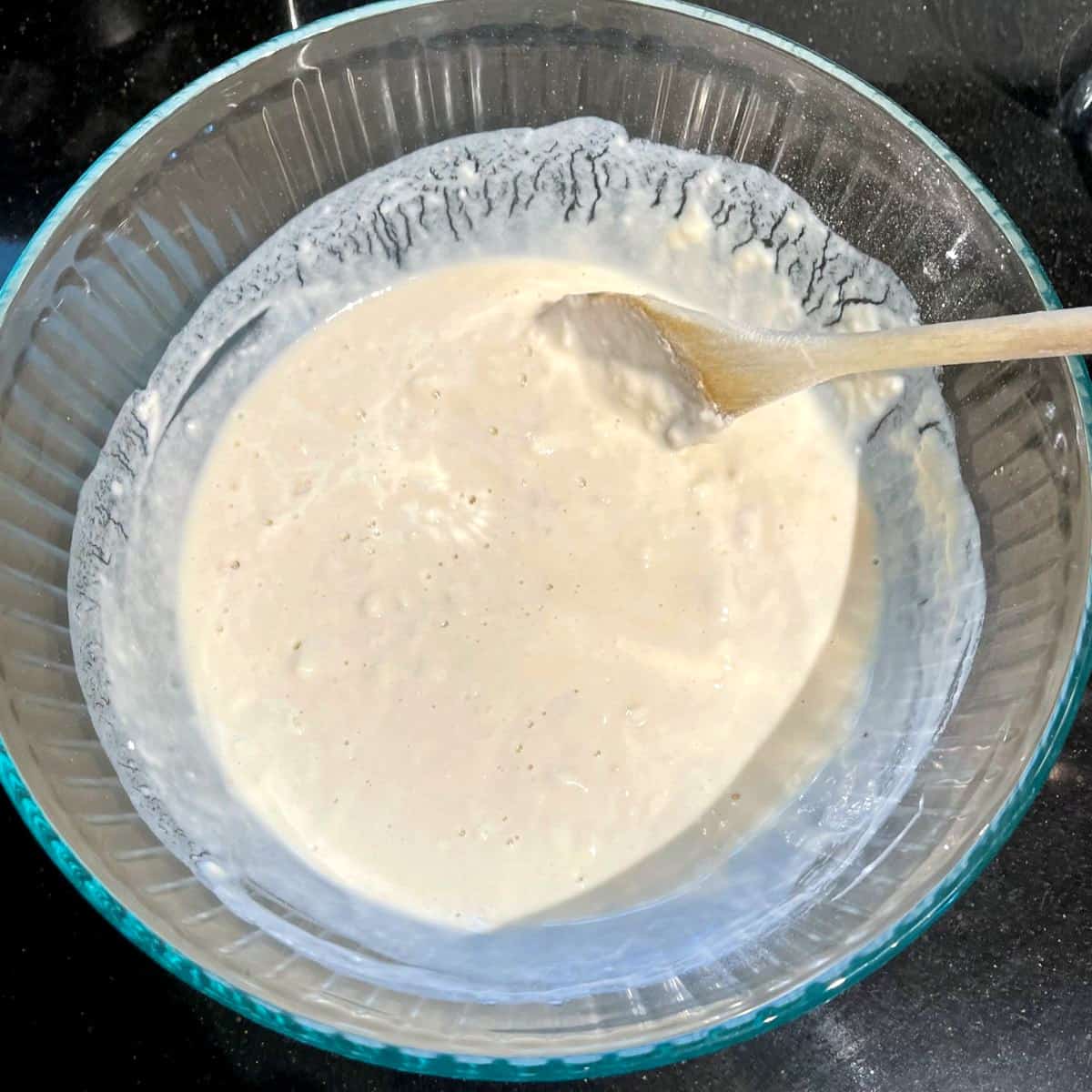
Mix with a wooden spoon or in the stand mixer bowl with the paddle attachment. Cover the bowl and set aside overnight on the countertop.
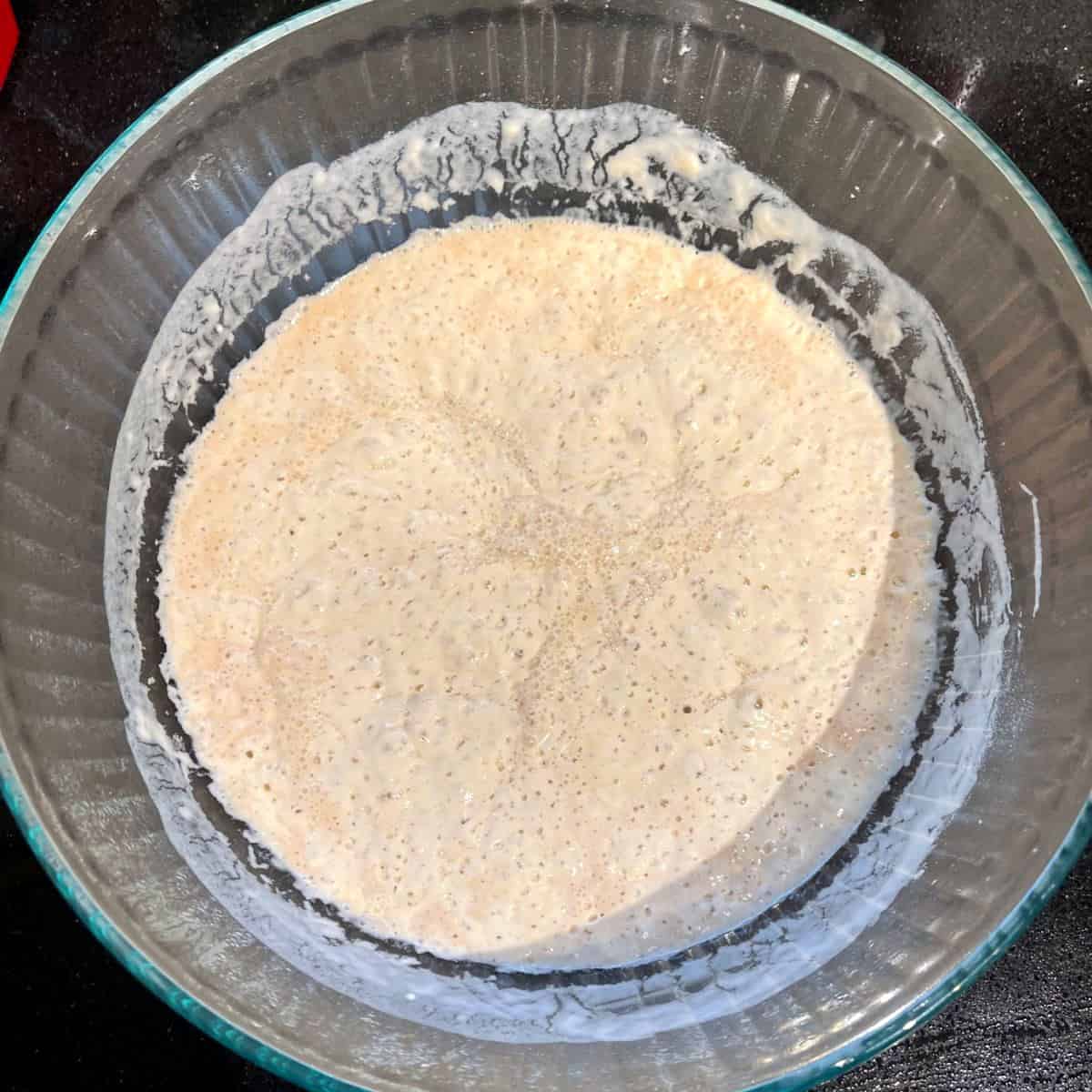
The biga will have risen overnight and dropped again, and it will look very bubbly.

Add two cups of flour and salt to the biga.
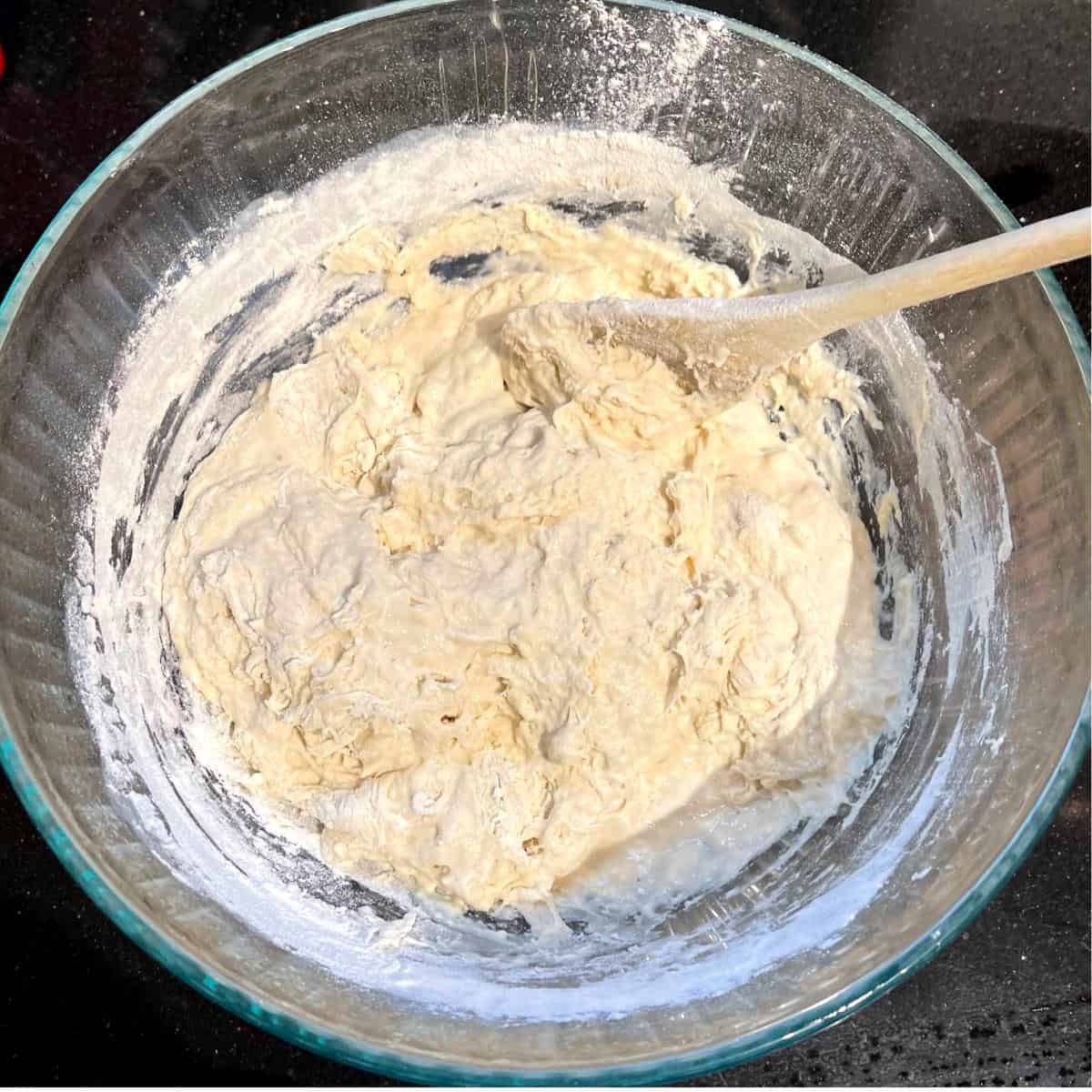
Mix with a wooden spoon. Add one more cup of flour, mix, and transfer to a lightly floured surface or countertop. Knead the dough for seven minutes by hand or in the stand mixer on low speed using the dough hook attachment until soft, smooth and supple. Add more flour as necessary. I needed a total of three cups and two tablespoons (in addition to the flour in the biga). The dough should not be tacky or stick to the countertop, but, kinda like pizza dough, it should be soft and pliable and not stiff at all.

Shape the dough into a smooth ball. Place in an oiled bowl, making sure to coat the top of the dough with oil. Cover and set aside for an hour.
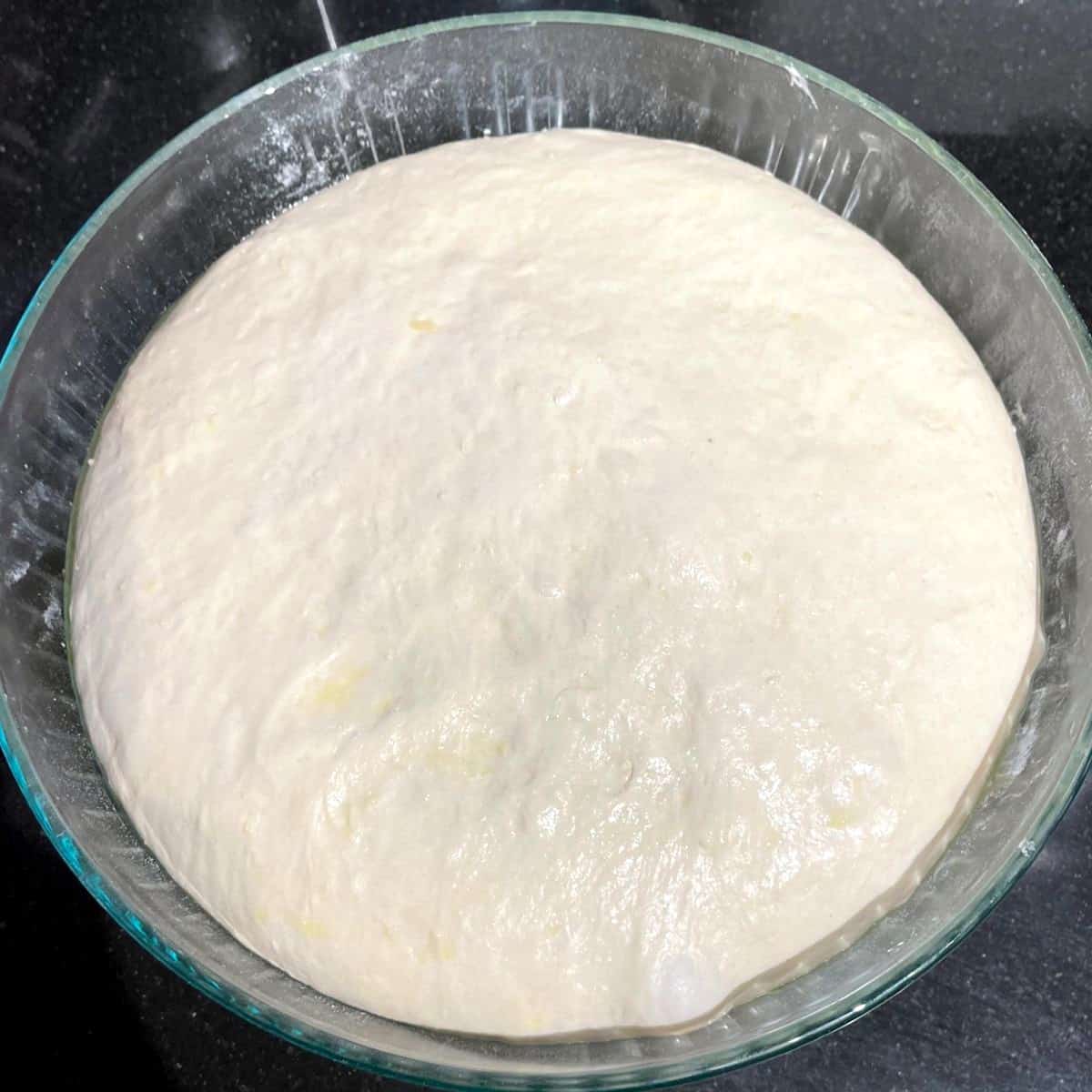
After an hour the dough should have doubled. Remove it to the countertop and punch down briefly to deflate.
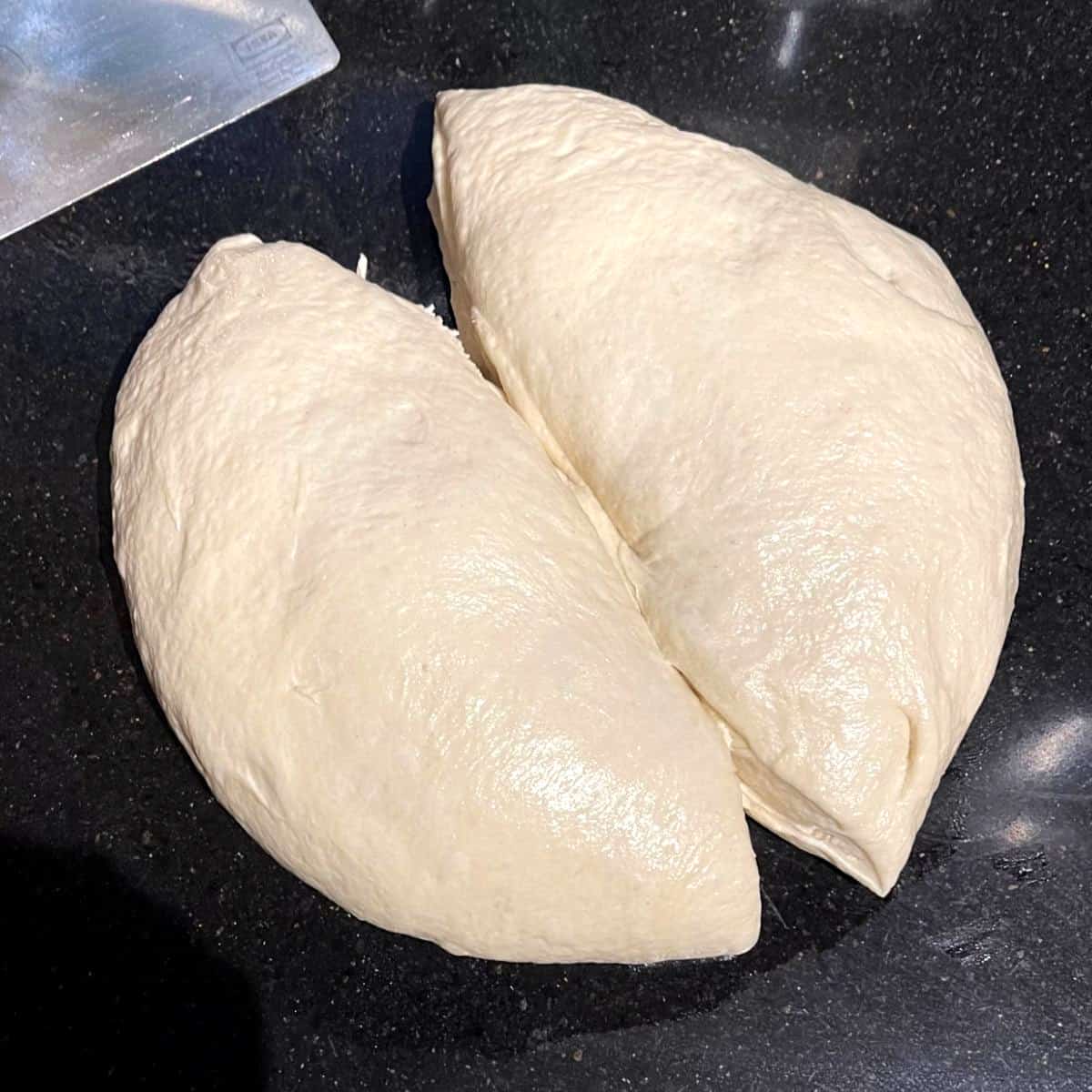
Divide the dough in half. Shape each half into a smooth, round ball.
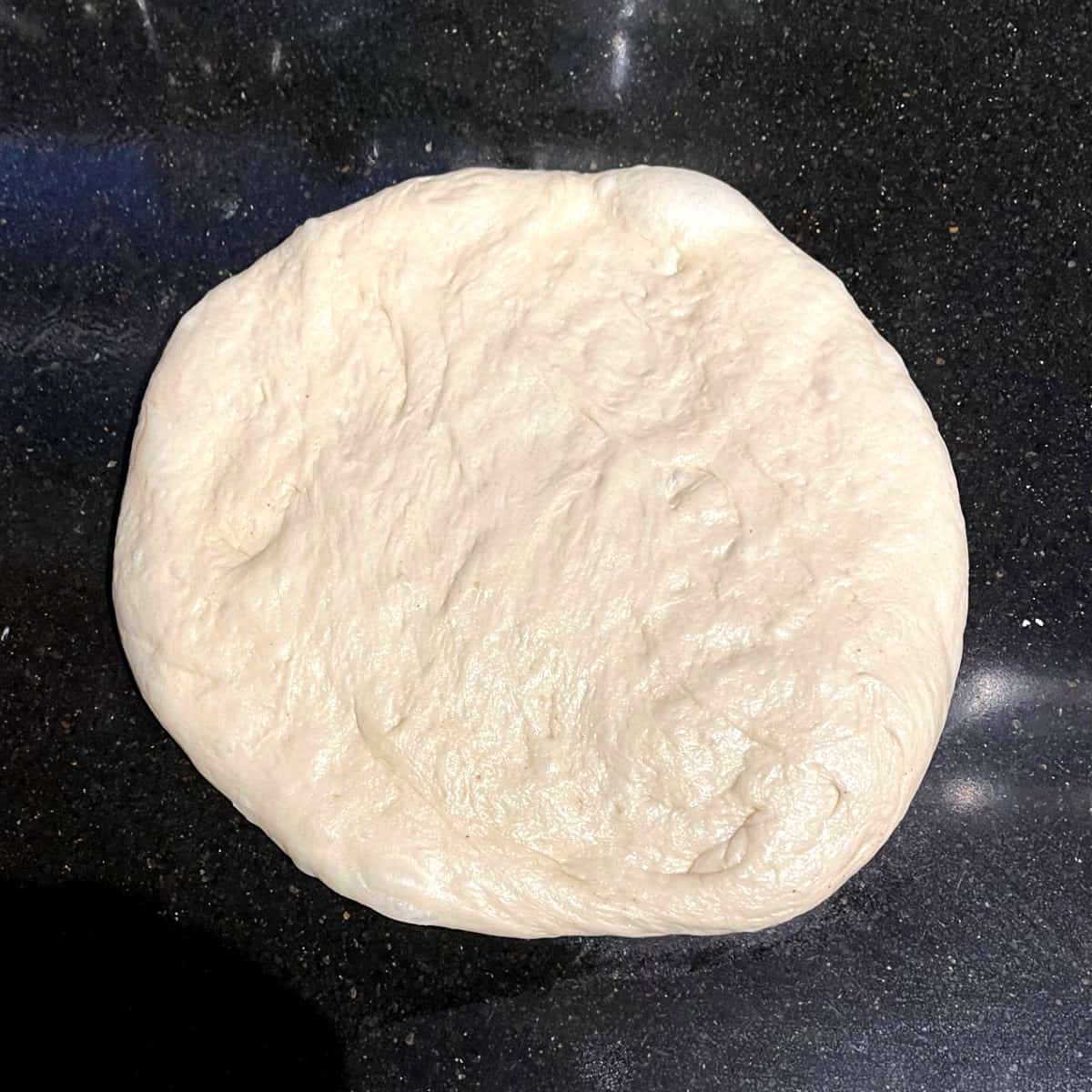
Flip the ball of dough over so the smooth side is on the bottom. Use your hands to shape the dough into a disc, about seven inches in diameter.
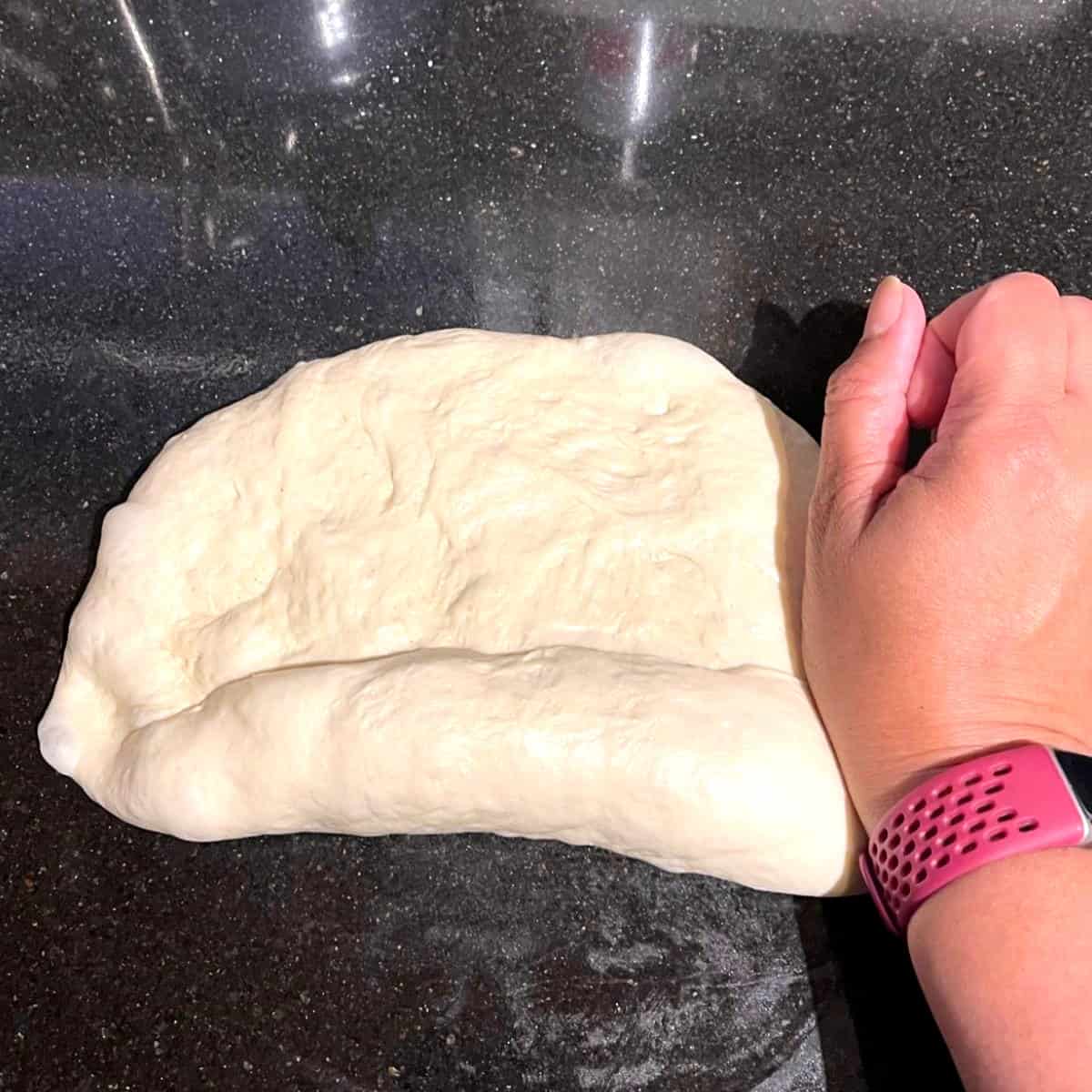
Begin rolling the disc into a tight cylinder, sealing the seams with the heel of your hand as you roll.
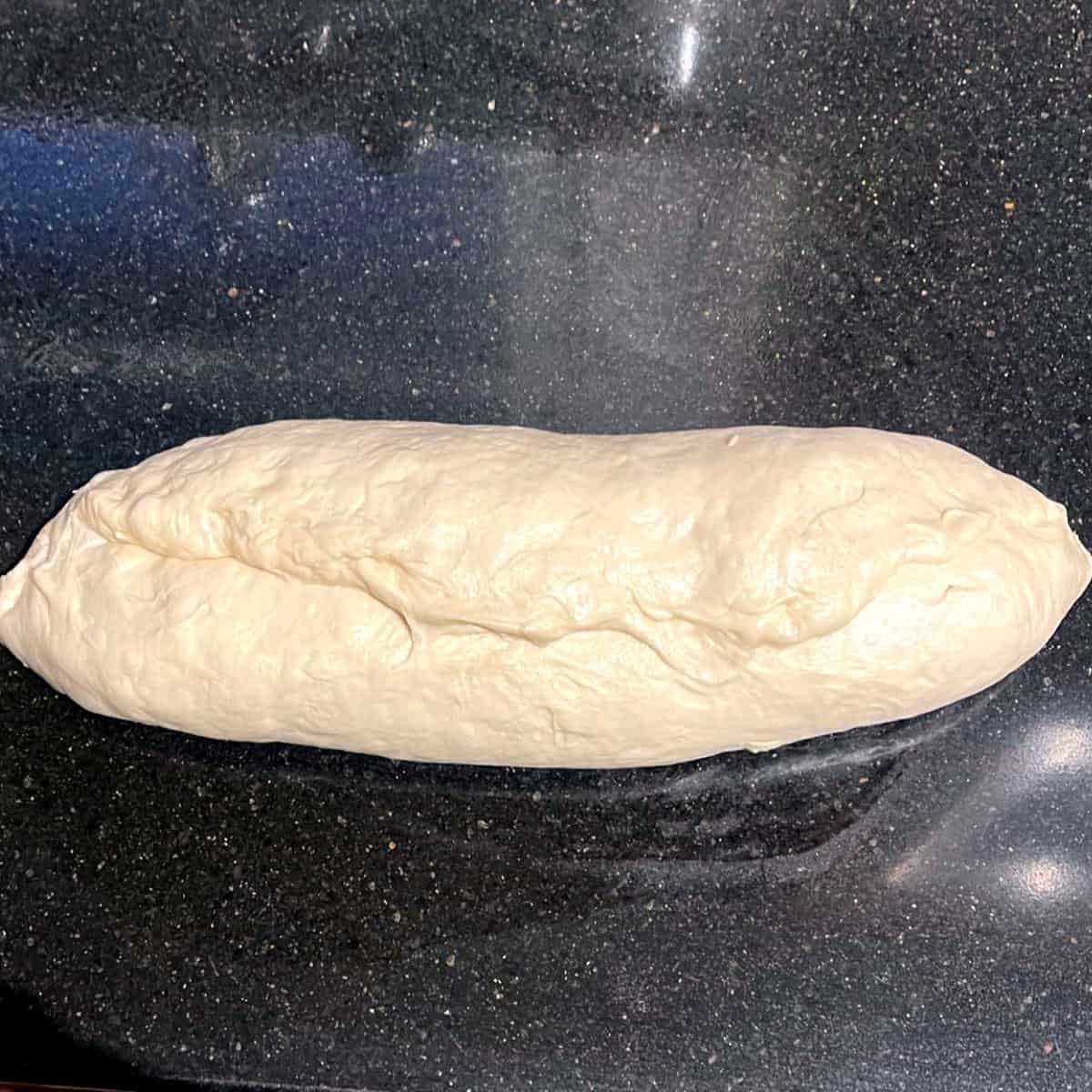
Pinch in the seams once you have a loaf.
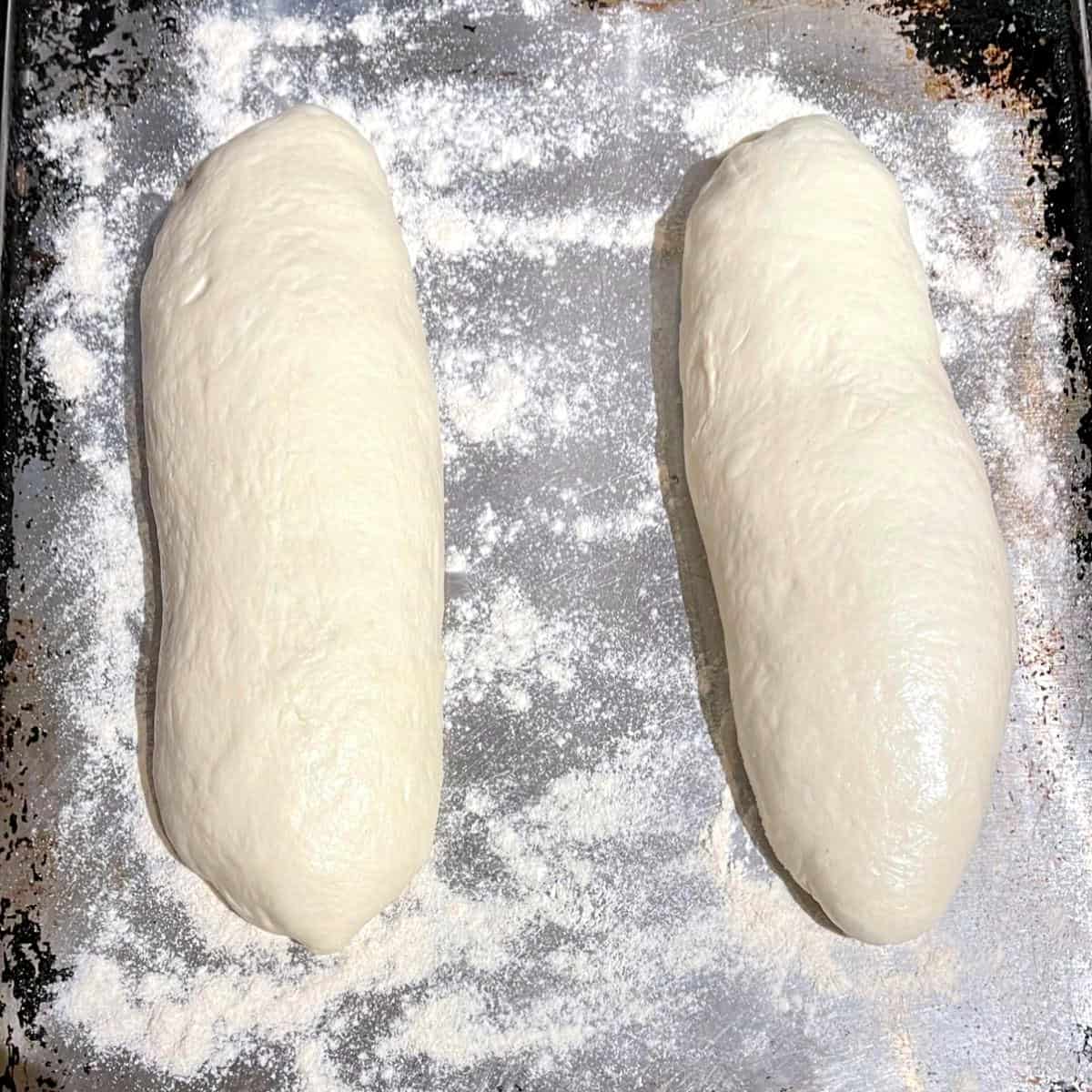
Place the loaves on a floured baking sheet, seam side down. Make sure you leave at least four inches between the loaves. Dust the tops of the loaves lightly with flour.
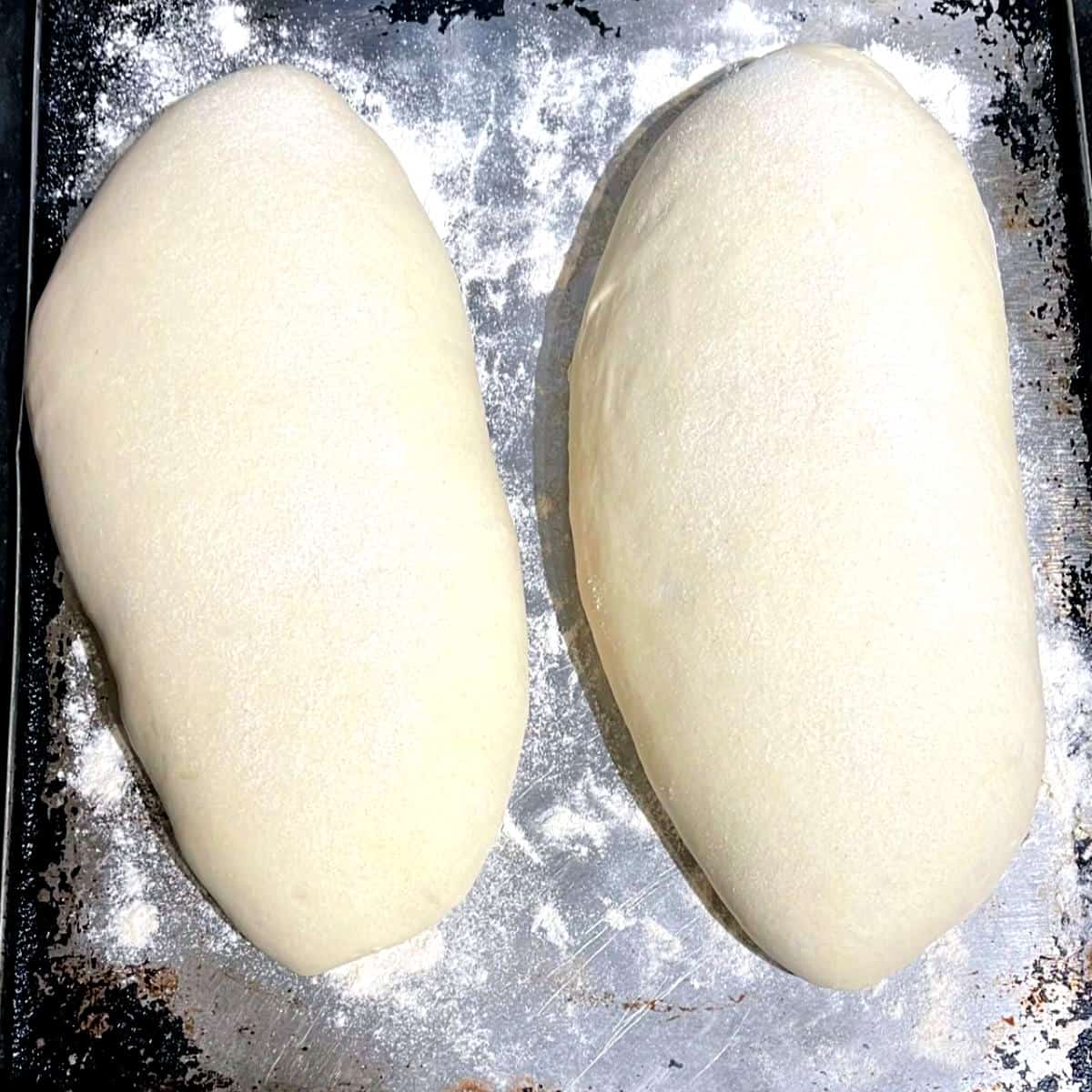
Cover the loaves with a kitchen towel and let them rise in a warm spot for 45 minutes to an hour, or until they have risen and become very puffy. Use a sharp blade to score the top of each loaf. I make two long, diagonal scores.
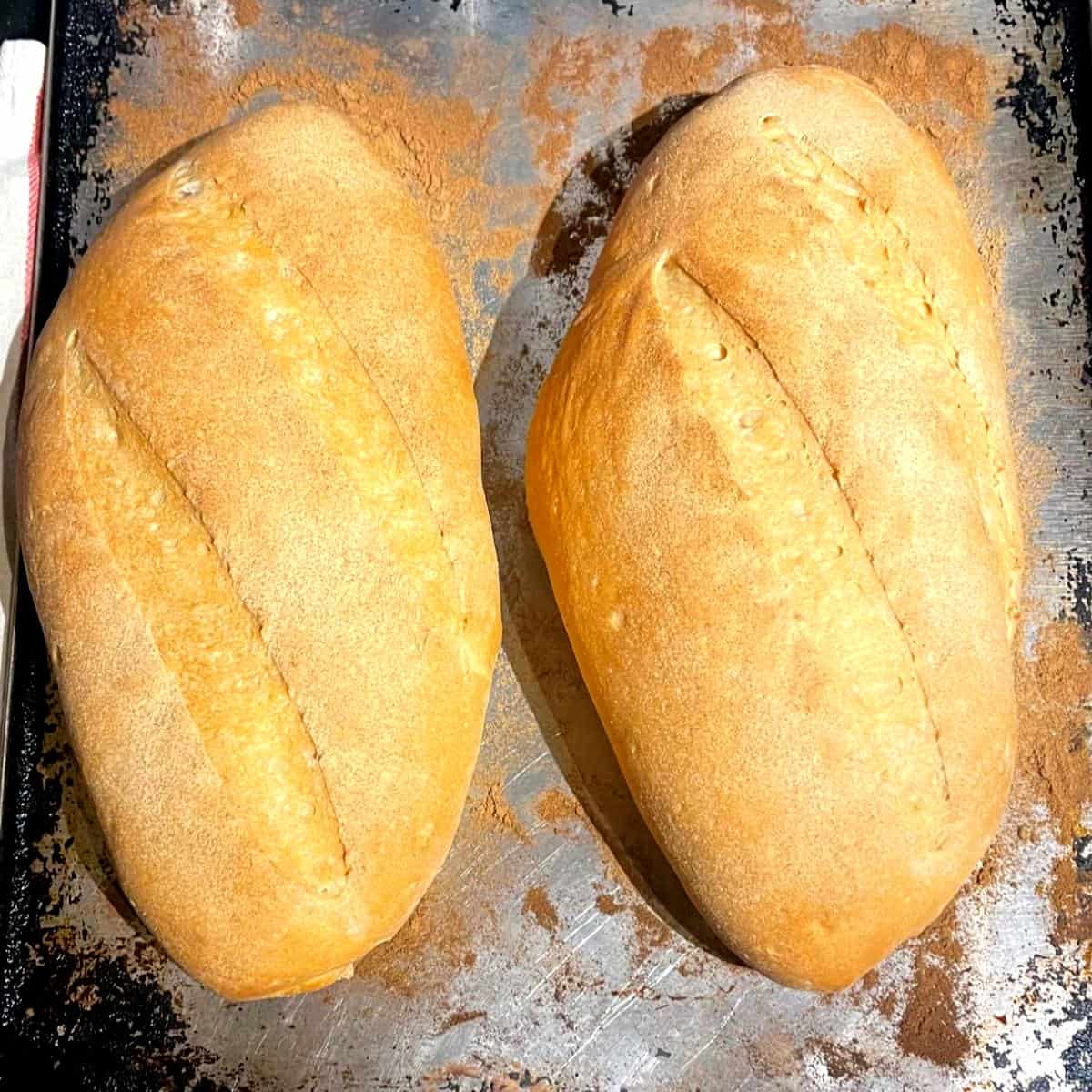
Bake the loaves of bread in a preheated 425 degree Fahrenheit/220 degree Celsius oven for 35 minutes. The bread should should hollow when rapped with the knuckles. Transfer the baked loaves to wire racks and let them cool thoroughly before slicing.

Helpful tips
- For a softer crust, replace half the water with any nondairy milk or choice.
- I like shaping this bread into oval loaves because that's how it is sold at my local grocery store. But you can also make boules with this dough, or divide it in three and bake in three loaf pans.
- For a shinier, more golden brown crust, brush the tops of the loaves with a mixture of 1 teaspoon olive oil and 1 teaspoon non-dairy milk.
- Don't go too far over the rise times for the bread. When bread is left to rise for too long, its structure can weaken, causing the bread to fall flat in the oven.
- Be sure to score the bread with a very sharp knife or blade before baking. This helps ensure that the steam created during baking has an outlet to escape, and those slashes look so attractive when they expand. If you don't score the bread the steam will just break through the weakest spots in the dough resulting in a loaf that won't look so great.
- If you are a new baker, I advise using your hands to knead bread dough instead of a stand mixer. It is easy to add too much flour or too little when you are letting the machine do the work for you. But if, as a new baker, you get an understanding of how the dough should feel under your fingers as you knead, you'll be well on your way to becoming an expert!
Storage instructions
- Refrigerate: the bread can be stored in the fridge for up to a week.
- Freeze: Freeze the loaves of bread or individual slices in a freezer-safe bag for up to three months.
- Reheat: Place the loaf in a brown paper bag and spray the bag with water. Place the bag in a preheated 400 degree Fahrenheit/205 degree Celsius oven for five minutes or until the bread has warmed through. Reheat or toast individual slices in the toaster oven.
More delicious bread recipes
Love this Italian bread recipe? Be sure to follow us on Instagram or Facebook or sign up for our free email newsletter to keep up with our new recipes.
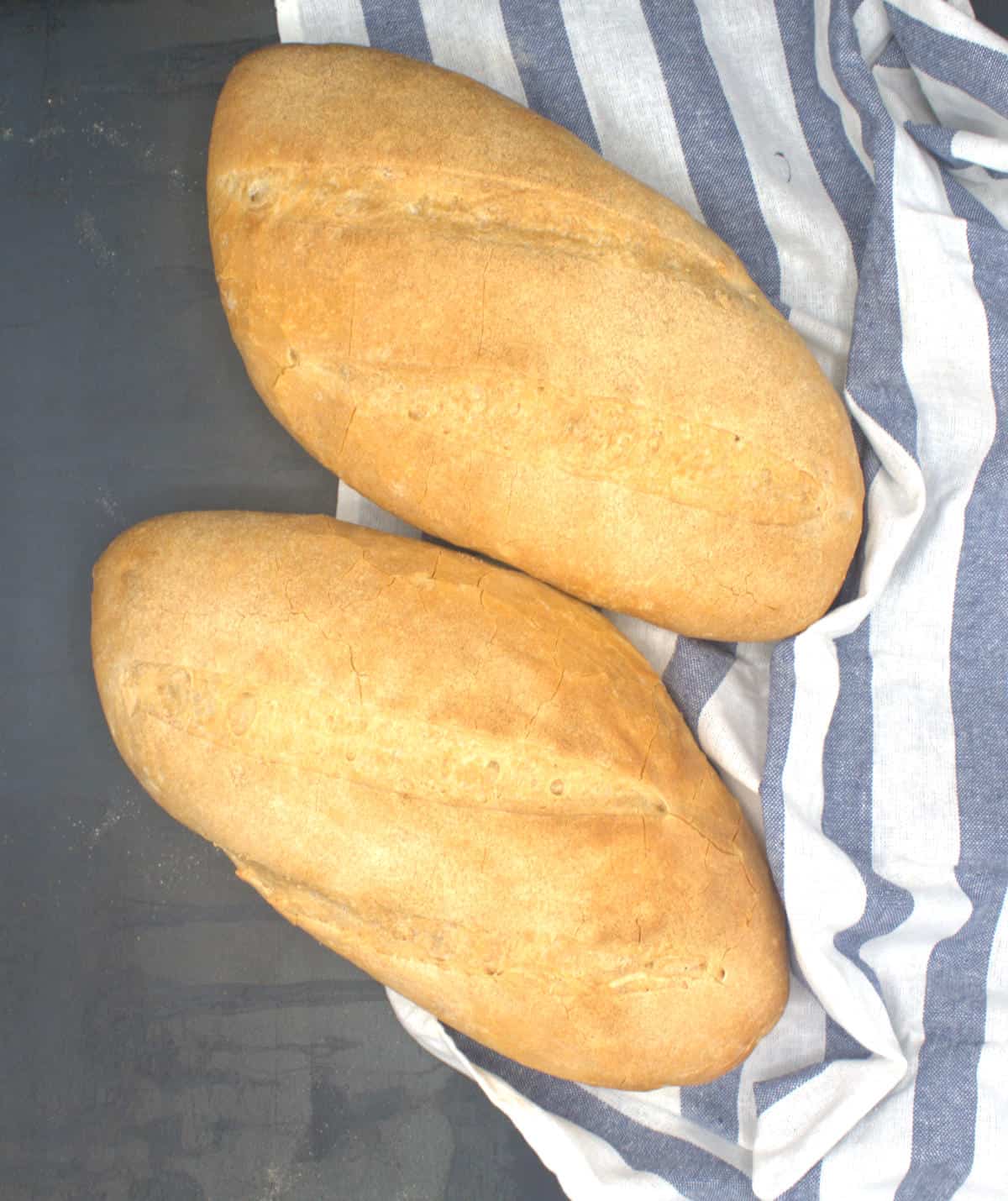
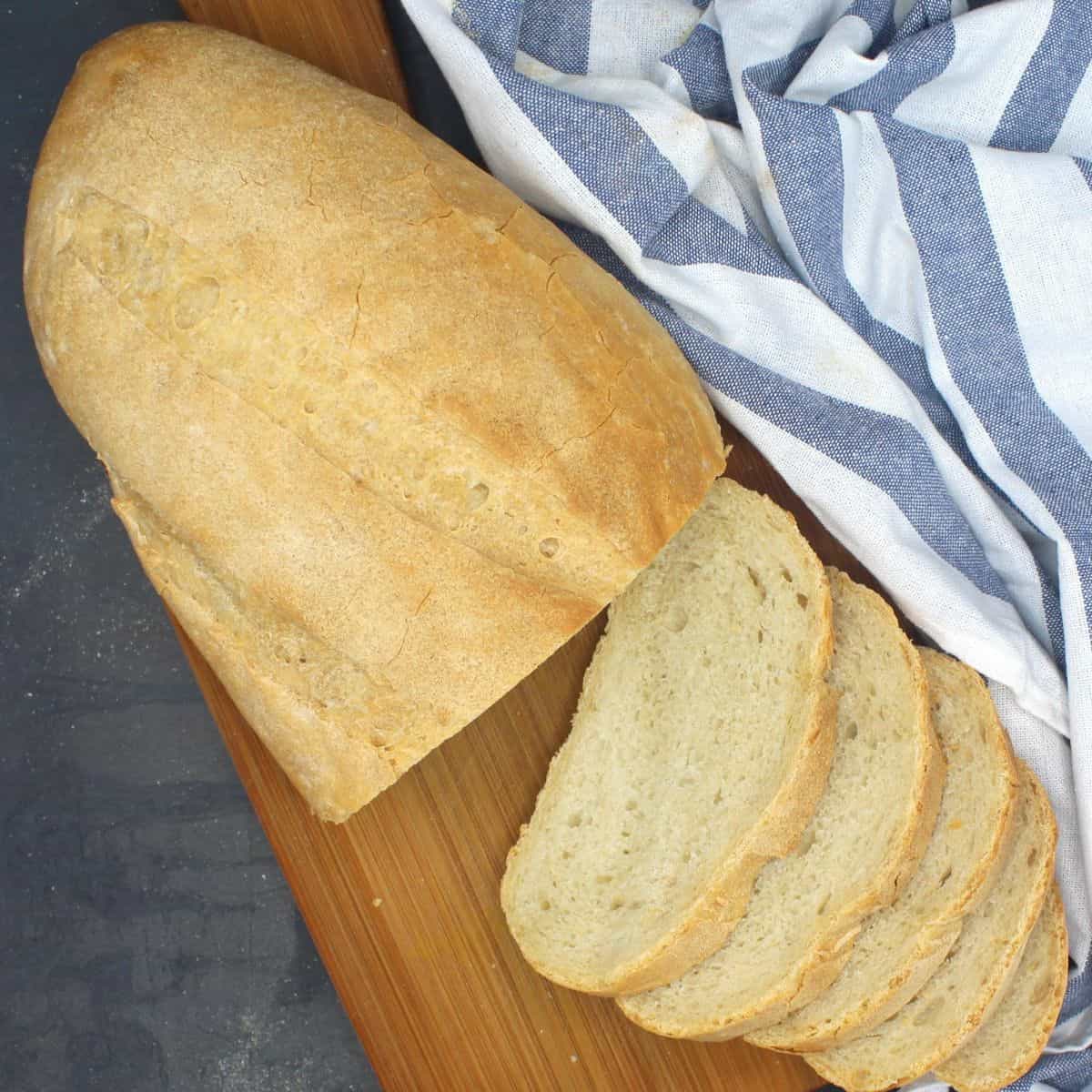
Easy Italian Bread
Equipment
Ingredients
For the biga starter
- 1¾ cups unbleached all-purpose flour
- 2¼ teaspoons active dry yeast (or instant yeast. If the active dry yeast you are using is old or has been sitting around for a while, make sure it is active by mixing it in the lukewarm water before adding the flour. If it froths and bubbles in five minutes, it is alive. If not, discard it).
- 2 cups lukewarm water (replace 1 cup of water with 1 cup non-dairy milk for a softer crust)
For the bread dough
- 3 cups unbleached all-purpose flour (plus more as needed. I needed two tablespoons more).
- 1½ teaspoons salt
Instructions
Make the biga
- Place the biga starter ingredients in a bowl: flour, yeast and lukewarm water.
- Mix with a wooden spoon or in the stand mixer bowl with the paddle attachment. Cover the bowl and set aside overnight on the countertop.
- The biga will have risen overnight and dropped again, and it will look very bubbly.
Make the bread dough
- Add two cups of flour and salt to the biga. Mix with a wooden spoon. Add one more cup of flour, mix, and transfer to a lightly floured surface or countertop.
- Knead the dough until soft, smooth and supple for seven minutes by hand or in the stand mixer, adding more flour as necessary. I needed a total of three cups and two tablespoons (in addition to the flour in the biga). The dough should not be tacky or stick to the countertop, but it should be soft, pliable and not stiff at all.
- Shape the dough into a smooth ball. Place in an oiled bowl, making sure to coat the top of the dough with oil. Cover and set aside for an hour.
- After an hour the dough should have doubled. Remove it to the countertop and punch down briefly to deflate. Divide the dough in half. Shape each half into a smooth, round ball.
- Flip the ball of dough over so the smooth side is on the bottom. Use your hands to shape the dough into a disc, about seven inches in diameter. Begin rolling the disc into a tight cylinder, sealing the seams with the heel of your hand as you roll. Pinch in the seams after the final roll.
- Place the loaves on a floured baking sheet, seam side down. Make sure you leave at least four inches between the loaves. Dust the tops of the loaves lightly with flour.
- Cover the loaves with a kitchen towel and let them rise in a warm spot for 45 minutes to an hour, or until they have risen and become very puffy. Use a sharp blade to score the bread. I make two long scores.
Bake the bread
- A few minutes before the bread loaves have fully risen, preheat the oven to 425 degrees Fahrenheit/220 degrees Celsius.
- Bake the loaves in the preheated oven for 35 minutes. The bread should should hollow when rapped with the knuckles. Transfer the baked loaves to a rack and let them cool thoroughly before slicing.
Notes
- For a softer crust, replace half the water with any nondairy milk or choice.
- I like shaping this bread into oval loaves because that's how it is sold at my local grocery store. But you can also make boules with this dough, or divide it in three and bake in three loaf pans.
- For a shinier crust, brush the tops of the loaves with a mixture of 1 teaspoon olive oil and 1 teaspoon non-dairy milk.
- Don't go too far over the rise times for the bread. When bread is left to rise for too long, its structure can weaken, causing the bread to fall flat in the oven.
- Be sure to score the bread with a very sharp blade before baking. This helps ensure that the steam created during baking has an outlet to escape, and those scores look so attractive when they expand. If you don't score the bread the steam will just break through the weakest spots in the dough resulting in a loaf that won't look so great.
- Refrigerate: the bread can be stored in the fridge for up to a week.
- Freeze: Freeze the loaves of bread or individual slices in a freezer-safe bag for up to three months.
- Reheat: Place the loaf in a brown paper bag and spray the bag with water. Place the bag in a preheated 400 degree Fahrenheit/205 degree Celsius oven for five minutes or until the bread has warmed through. Reheat or toast individual slices in the toaster oven.
Nutrition
The post Easy Italian Bread appeared first on Holy Cow Vegan.
